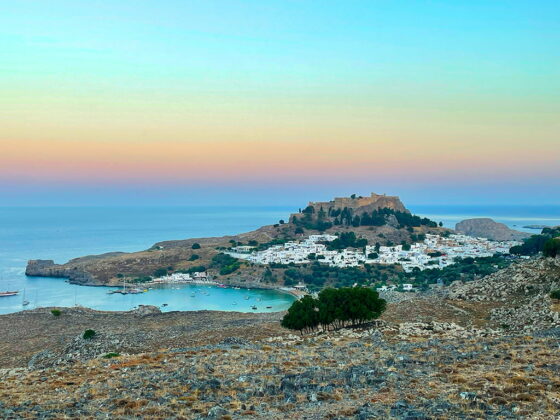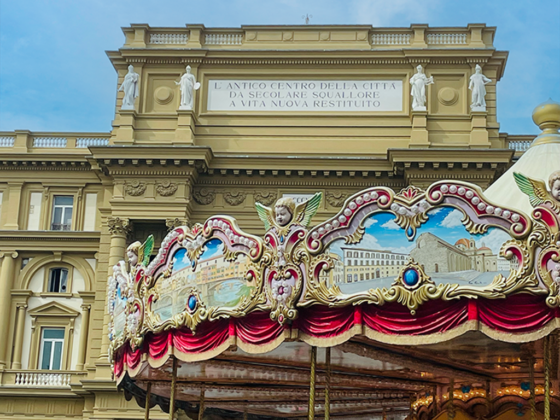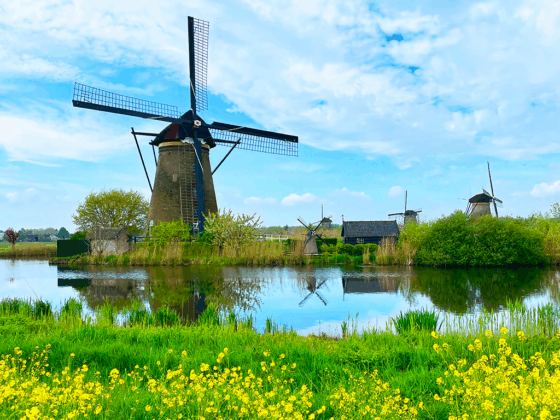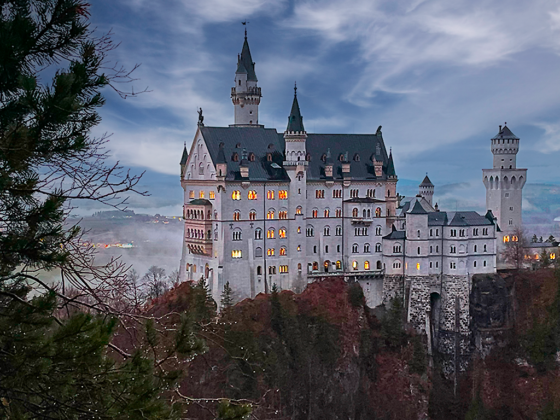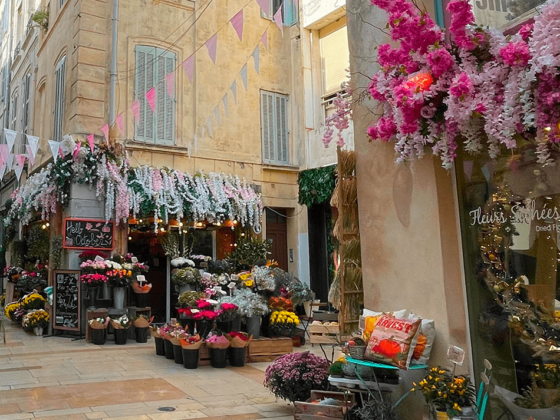When I think of a summer tour, almost by deformation of origin, the first thought is ‘sea’. And by that I don’t mean beach life (because of my complexion and hyperactivity it doesn’t suit me very well, Paolino envies those who do!) but rather the idea of sea air, the sight of the sea, its background noise.
The second thought is ‘discovery’. In our travels we like to get to know the lands we visit deeply, exploring as much as possible what a new place has to offer us, enjoying every form of discovery to the fullest, be it a beach, a site, a village or a nature trail.
If there is one land that encompasses all this, it is Greece! So, map in hand, we chose the combo of two Dodecanese islands, perhaps less touristy than their more famous sisters (not so much, though), but full of beauty, nature and history: Rhodes and Kos.
In this second article, I will tell you about Kos, the island of Hippocrates – the father of modern medicine – is the third largest island in the Dodecanese. The island is not only sea, but a glimpse into traditional Greece thanks to its inland villages and sites of historical importance, the Asklepeion above all.
If you haven’t already done so, read the first part in Rhodes .
- Itinerary in a nutshell
- Day 1: Kos Old Town and Askepleion
- Day 2: Palaio Pyli Castle, Mount Dikeos and Zia
- Day 3: Alikes Lake, Tigaki Beach and Mastichari Beach
- Day 4: Antimachia Castle, Kardamaina and Paradise Beach
- Day 5: Castle of Kefalos, Mylotopi, Agios Stefanos Beach and Kastri
- Day 6: Limnionas Beach and Paralia Paradisos
- Day 7: Agios Fokas and Therma Beach
Itinerary in a nutshell
Our trip lasted 15 days, not counting the day of arrival in Rhodes (late afternoon) and departure from Kos (in the morning).
The second part of our island hopping in Kos lasted seven days, covering 422 km and sleeping in Kos town. We rested at the most famous beaches – Tigaki Beach, Mastichari Beach, Paradise Beach, Agios Stefanos Beach, Limnionas Beach, Paralia Paradisos, Agios Fokas and Therma Beach – and visited the major historical sights – Kos Old Town, Asklepeion, Palaio Pyli Castle, Antimachia Castle, Kefalos Castle, the village of Zia and the Mylotopi of Kefalos-. The wild nature of the island gave us unforgettable places and views – Mount Dikeos, Lake Alikes, Plaka Forest and the islet of Kastri -.
TipsforTrips: To get from one island to another we used the ferry. In summer, there are up to 3 crossings a day: the first ferry leaves at 08:00 and arrives around 10:20; the last ferry is around 17:00 and reaches Kos at 20:25.The route is operated by the companies Blue Star Ferries and Dodekanisos Seaways with conventional and high-speed ferries.
On the ferries you can take the car on board but you have to book the ticket because of limited places, especially in summer. However, we preferred to rent two separate cars in order to save the cost of the ticket and we organised the stages in such a way as to save ourselves three days’ rental.
Day 1: Kos Old Town and Askepleion
We arrive in Kos mid-morning. Just enough time to put our bags in the room and make a tactical change of outfit – for the ferry we preferred to wear long trousers and a sweatshirt, the air conditioning won’t kill us – and we are ready to go.
Kos Town is a lively town, rich in culture, history and art. It is an open-air museum and simply strolling through its streets one can admire ruins from various eras surrounded by countless taverns, bars and small shops. Being full of more or less beautiful and well-preserved ruins and archaeological sites, one runs the risk of following the signs to what could turn out to be a wasteland with little or nothing to see.
Below is a list of sites that we think are worth a visit:
- RomanOdeon: an ancient Roman theatre from the 2nd century A.D. was one of the most important public buildings in the past as it was used as the seat of the local senate as well as for hosting musical events. Beneath the steps are two semicircular porticoes and a series of galleries once decorated with marble statues placed in niches. Admission is free.
- Eastern Archaeological Site: located in the centre, behind Eleftherias Square, it includes the ruins of the Temple of Aphrodite, the Temple of Heracles, the fortifications of the ancient city and theancient Agora. Admission is free.
- Western Archaeological Site: it is located in the upper part of the ancient city – on the Leofóros Grigoríou road – and includes the Sanctuary of the Nymphs, the ruins of an ancient Gymnasium, the House of Europa – a mosaic depicting the abduction of Europa by Zeus – a stadium and the ruins of the baths. Admission is free.
- Casa Romana: is a well-preserved Roman house with impressive mosaics and frescoes. It consists of no less than 36 rooms and three large atria that were originally a source of light and air for the surrounding rooms. It offers an insight into daily life during Roman times and shows the artistry of those times.
- Turkish Bath: a historical facility dating back to the Ottoman period. It is a traditional hammam reflecting the culture and hygiene practices of the Ottoman era.
- Hippocrates Plane Tree: this was the tree under whose branches the master Hippocrates taught his pupils the art of medicine. To this day, it is supported by scaffolding in order to keep it standing and not let it give way (the tree is about 600 years old). The tree has witnessed centuries of history and is considered the descendant of the original Platanus and is an icon of Kos Town;
- Neratzia Castle: located to the east of the port of Mandraki, it was a useful fortress that ensured various peoples, Christian pilgrims and travellers en route to the Holy Land, the safety of a place to stop and find refreshment.

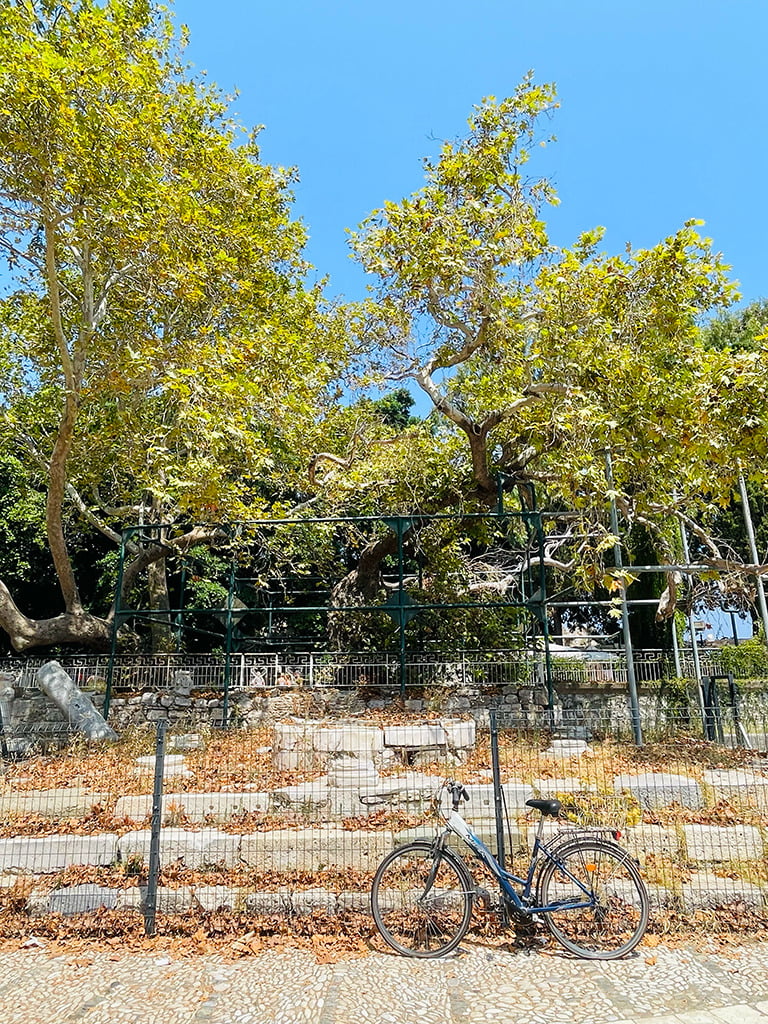
After a refreshing break in the alleys of the harbour, we picked up the rented car and almost at sunset we drove to one of the most magical places on Kos: the archaeological site of Asklepieion, only 3 km away from Kos Town.
The Asklepieion was founded in the 3rd century B.C. and only discovered in the early 20th century. It is a unique place that witnessed important events, the centre of which was the legendary Hippocrates, the father of medicine and famous Greek physician, geographer and aphorist. Here he founded a medical school and health centre. Today, one can admire the propylaea, the patients’ rooms, the public baths, the altar of Apollo Kyparissios, its temple and, finally, the two temples of Asclepius – a famous character from Greek mythology, a demigod who later became the god of medicine and was particularly adored by the people after whom the place was named.
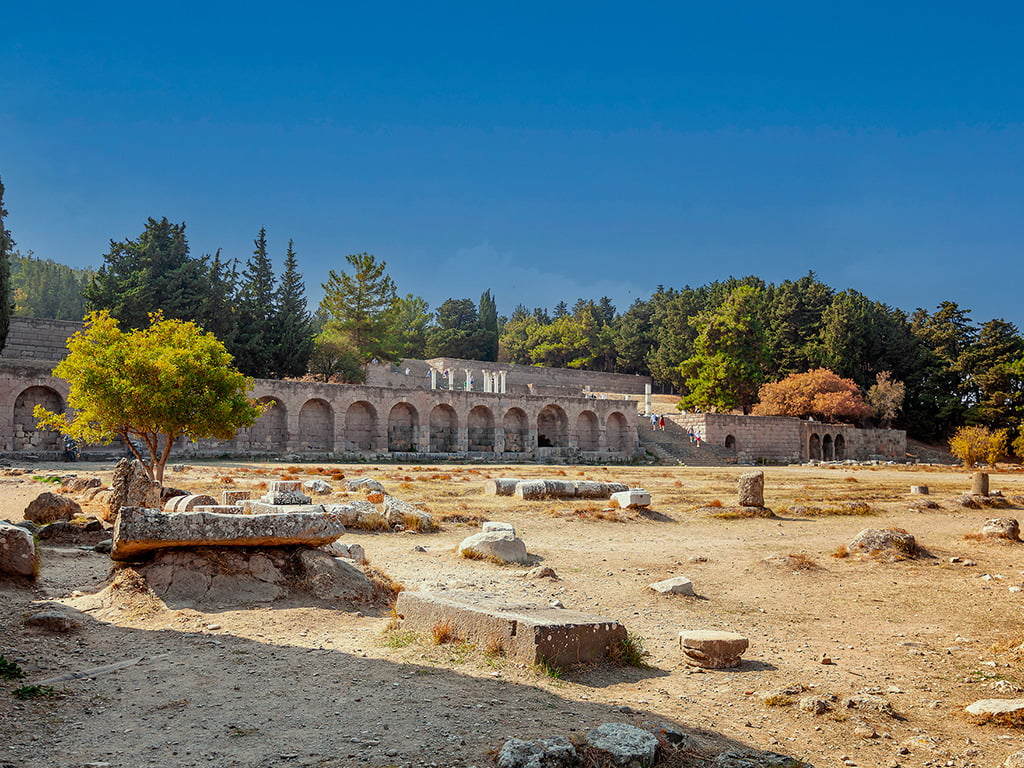
Day 2: Palaio Pyli Castle, Mount Dikeos and Zia
Today we dedicate ourselves to an excursion into the hinterland of Kos.
We begin with a visit to Palaio Pyli, one of the most important Byzantine historical sites on the island of Kos. The settlement is located on the western side of the Dikaios mountain range at a height of about 300 metres above sea level. It covers a very large area and within it there are many paved streets, abandoned houses, a Turkish bath and the Monastery of St. Mary Kastrianon. The houses of this settlement were protected by walls dating back to the 11th century and enclosed the hillside at various heights. The ends of the arched vault of the collapsed entrance are still visible, with two decorative brick vaulted niches on either side of the gate. The entire settlement formed a peculiar fortress that was abandoned by its inhabitants around 1830, after a decimating cholera epidemic.
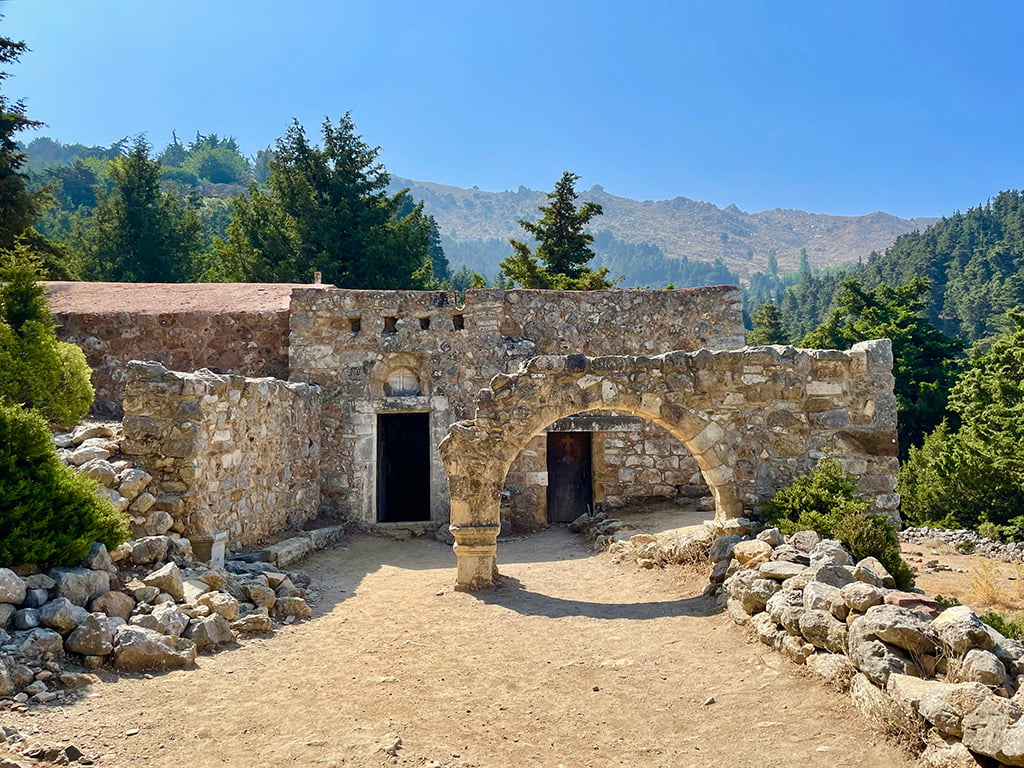
At the top of the hill are the remains of the Palaio Pyli Fortress, which was built in the 11th-12th centuries. It is the oldest castle on Kos and was inhabited until the beginning of the 19th century. The castle is built of limestone and igneous rock and the use of bricks is unique throughout the Dodecanese. The castle was very well fortified and the inaccessibility of the site protected it from enemy attacks. During the 15th century and under the threat of a Turkish invasion, the castle was often used as a refuge for the people of the area and the people of the town of Kos. In 1461 it was the only remaining garrisoned castle and the fortifications were improved while ammunition was stockpiled. The castle, however, was severely damaged in the earthquake of 1493 and eventually fell into the hands of the Ottomans in 1523. Parts of the castle were restored by the Ottomans but the area was abandoned in the early 19th century due to an epidemic.
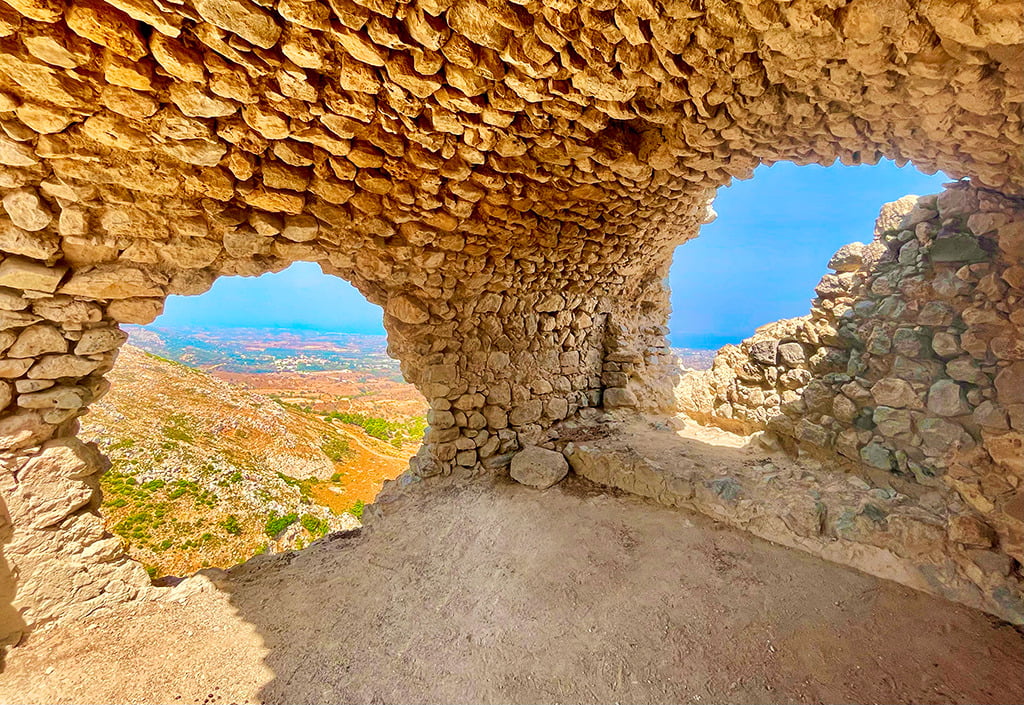
We move on to Zia, a quaint village in the centre of the island, known for its relaxing atmosphere and scenic location. This charming village is located on the western side of the island amidst lush vegetation and offers spectacular panoramic views of the Aegean Sea.
From here we start a route that takes us to the top of Mount Dikeos – 846 m – the highest on the island of Kos. The route is 7 km long, with an altitude difference of 476 metres and takes about three hours – round trip -. The level of difficulty is intermediate, with a little attention it is doable for everyone.
From the village of Zia, a stone staircase leads to a slightly uphill dirt road. After about half an hour, the actual, well-marked path to the summit begins. The first part of the trail passes through a dense cypress forest. The higher you go, the more sparse the vegetation is and in places the mountain slope is very steep and in places you almost have to climb. The last 20 minutes are totally exposed to the sun and on the final straight to the summit, some care is needed as there is a steep cliff next to the path. The view, however, is worth the walk; you can see the island of Kos from above, the sea and the surrounding islands. At the summit you can also reach the large Greek flag, the small church dedicated to Christ and the Orthodox Cross. We recommend setting off with a decent supply of water as there are no refreshment points along the way.
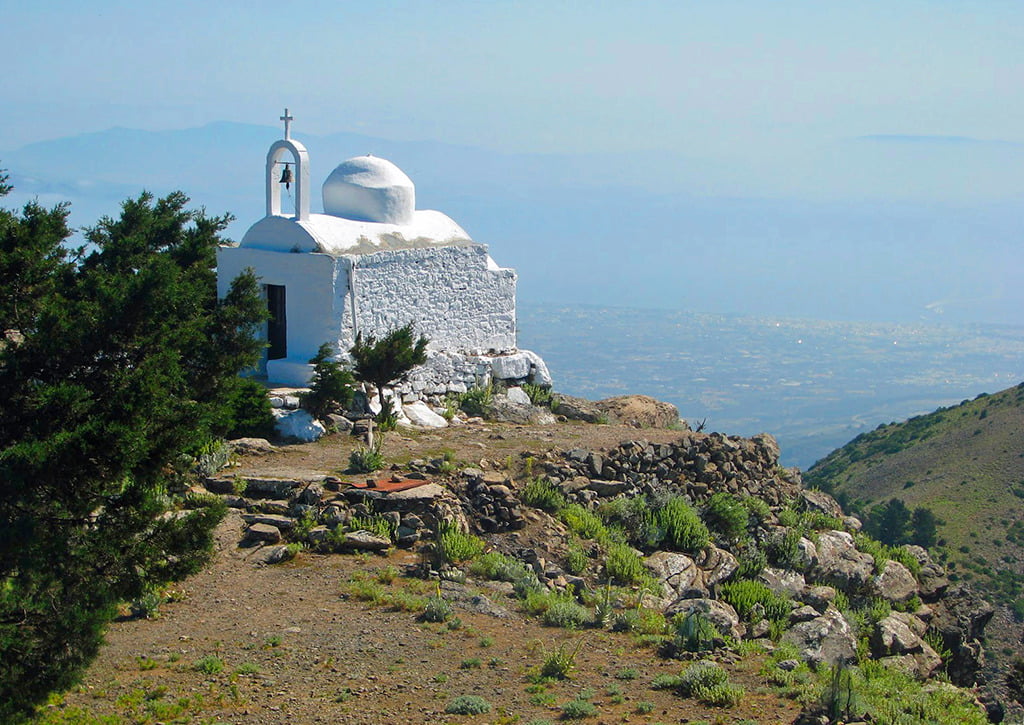
We return to Zia and lose ourselves in its alleys. The village itself is characterised by cobbled streets, traditional houses with red-tiled roofs and a central square with cafés and local shops. Handicraft products such as honey, olive oil and traditional souvenirs can be bought here. One of Zia’s main attractions is its spectacular sunset, considered one of the best on the island. Tourists gather in the village’s scenic taverns to enjoy a sunset dinner, admiring the spectacular view as the sun disappears behind the horizon. We try it too, but the mugginess and August heat spread a veil over the horizon that inhibits any view, so we devote ourselves to good food and wine until the evening.
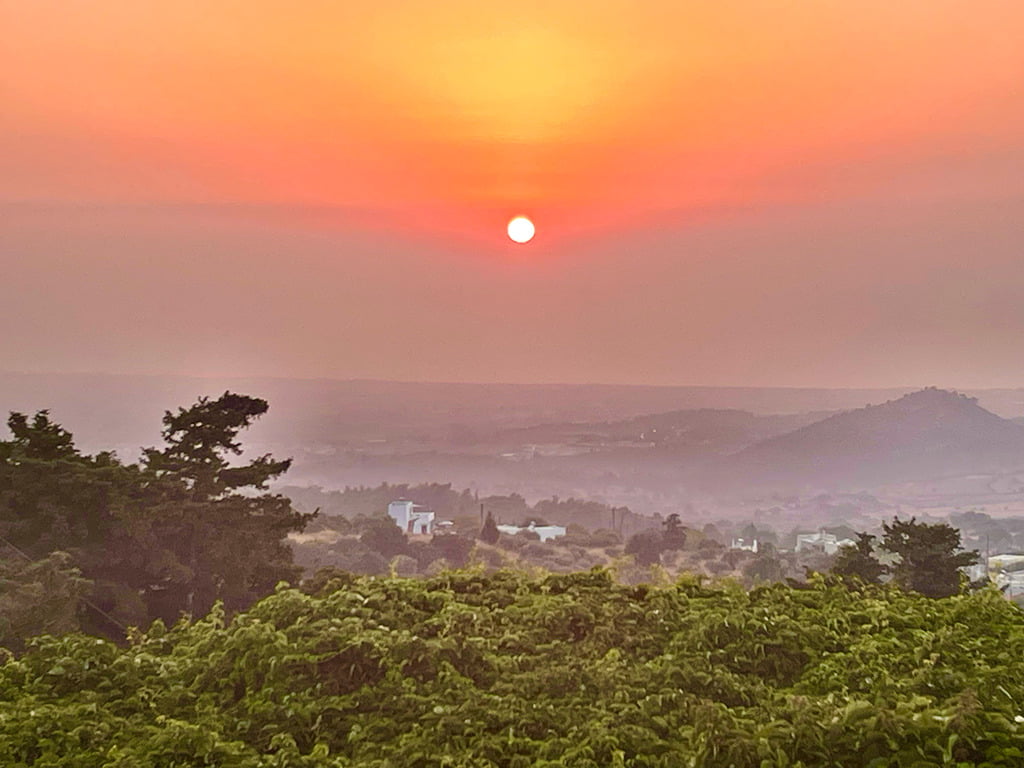
Day 3: Alikes Lake, Tigaki Beach and Mastichari Beach
Today’s first stop is Lake Alikes, a unique natural destination on the island of Kos. This brackish lake is known for its natural beauty and ecological importance, as it is home to numerous species of migratory birds. Surrounded by a vast area of vegetation, you can walk along hiking trails, admire the wildlife and enjoy the tranquillity in nature. You can also rent a bicycle and cycle around the lake for a different perspective.
N.B. Summer is unfortunately not the best time to visit. The lake is dried up and dirty, the paths around it are muddy and you run the risk of ending up in pitch ‘quicksand’ – which clearly happened to me, ending up knee-deep in a black, salty sludge that irritated my skin and particularly amused Paolino -.
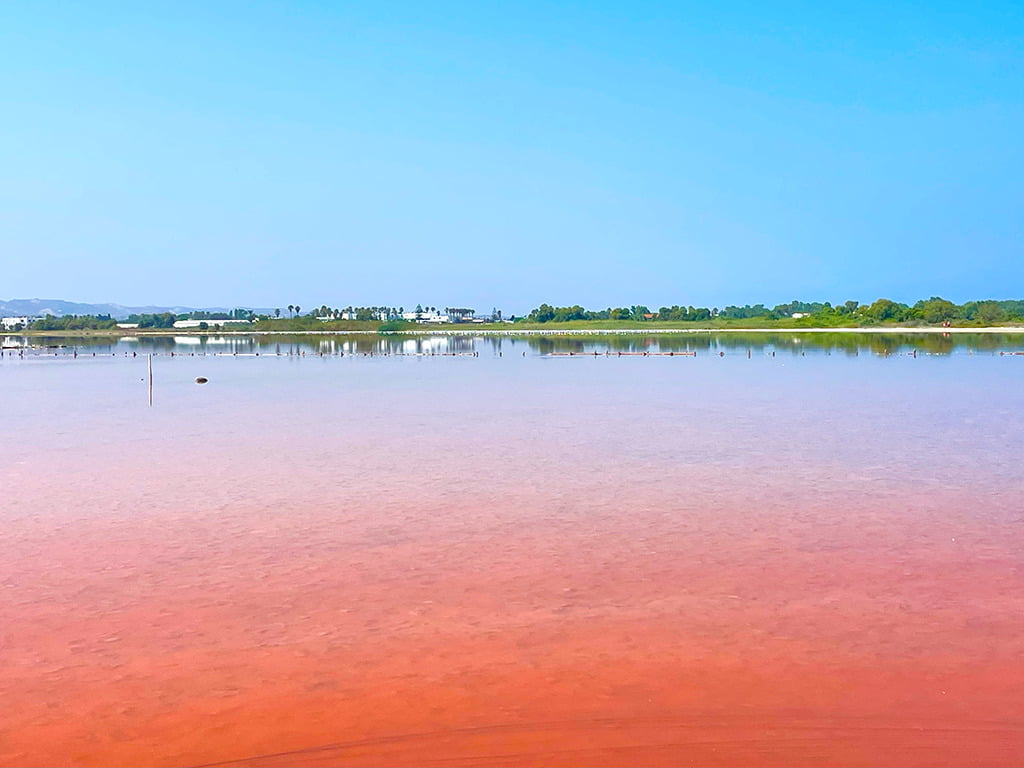
Mid-morning we move on to nearby Tigaki Beach. Ten kilometres of coastline with soft white sand hemmed in by green maritime pines and tamarisk trees, washed by a clean, transparent turquoise-blue sea. It is well equipped, with lidos with sunbeds and umbrellas where you can lie down comfortably, and behind it typical taverns where you can enjoy delicious Greek and international cuisine, pubs, bars and cafés. We stop for lunch but move on immediately afterwards.
In the afternoon, we relax at Mastichari Beach. Its white sandy beach is among the widest on the island of Kos and stretches for kilometres, alternating between areas equipped with sunbeds and umbrellas and completely free and wild areas where you can shelter from the sun under shrubs and tamarisk trees. Behind these sand dunes, there is a beautiful paved road where you can stroll and admire the entire coastline for a sunset stroll.
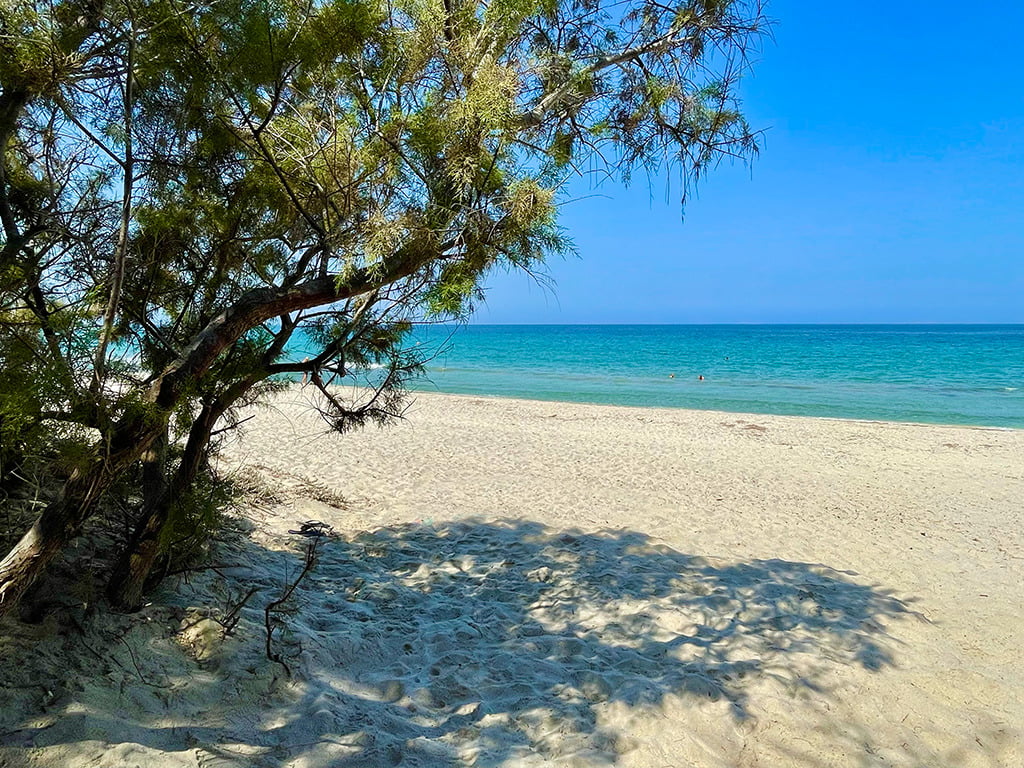
Day 4: Antimachia Castle, Kardamaina and Paradise Beach
We begin the day with a visit to the beautiful Antimachia Castle. The fortress was built in the 14th century by the Grand Master of the Order of St John. The fort was almost completely destroyed in the earthquake of 1493, but was rebuilt a year later by the Grand Master of the time. The gate at the present entrance to the complex was provided with an additional semicircular bastion at the beginning of the 16th century, an advanced point of defence for the fortress. The outer walls and the entrance area of the fortress are well preserved. Inside the fortress is the small church of Agios Nikolaos and the church of Agia Paraskevi. Only the foundation walls of the remaining buildings are visible. At the beginning of the 19th century, the inhabitants abandoned the settlement in the fortress and settled in nearby Antimáchia.
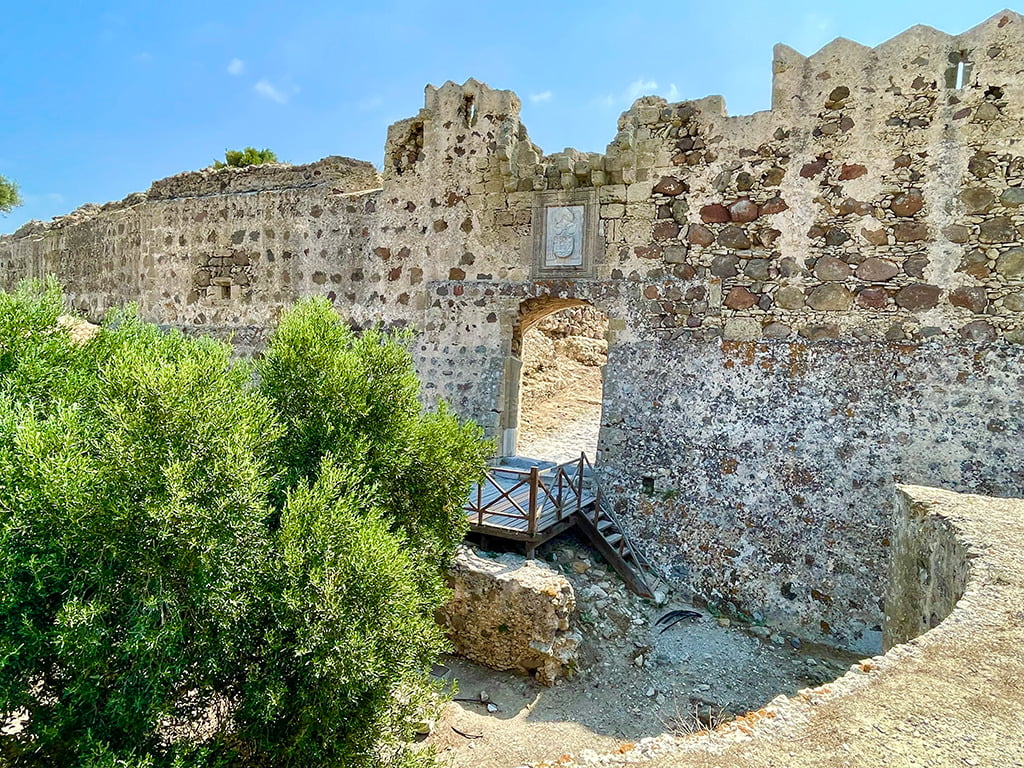
For lunch, we move to the small village of Kardamaina, along the southern coast of the island. The main attraction is its beach but on the seafront there are plenty of taverns, bars and cafés where you can enjoy delicious Greek dishes and refresh yourself with tasty drinks. After lunch, we enjoy a stroll through the alleys of the village full of little shops and do some shopping.


We spend the late afternoon at Paradise Beach, one of the best known beaches on Kos thanks to its fine golden sand and gently sloping clear water. The whole of Paradise Beach is equipped with sunbeds and umbrellas and has both a large panoramic restaurant for a proper lunch and a beach bar that serves quick snacks (sandwiches, burgers, salads, ice creams and cold drinks) to be enjoyed comfortably under the umbrella. A portion of the beach is called Bubble Beach. Its name comes from the fact that being volcanic Kos, small sulphurous bubbles emerge from the seabed creating a play of bubbles in the water making it look like a natural whirlpool bath.
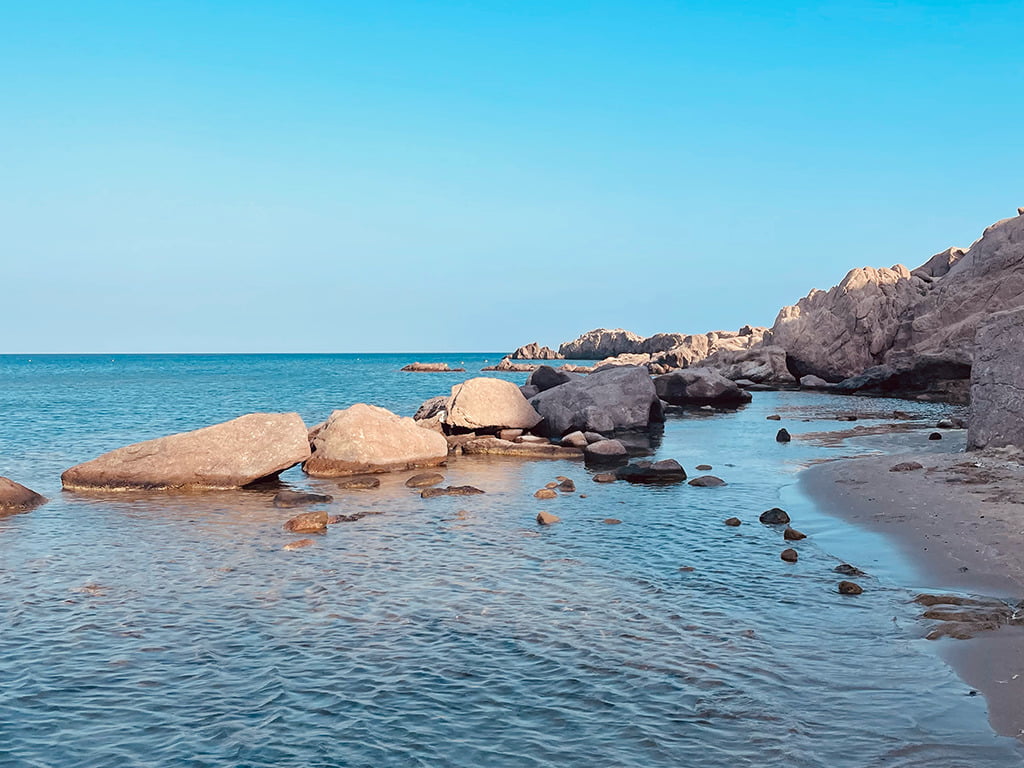
Day 5: Castle of Kefalos, Mylotopi, Agios Stefanos Beach and Kastri
We head south, to discover the Kefalos peninsula. On the way we come across the Plaka Forest, a pine forest full of colourful animals frolicking in unspoilt nature. The area is full of peacocks accustomed to the presence of man, lots of snoozing cats coexisting with turtles and squirrels. The Plaka Forest is full of pine trees, the clean, fresh water comes from a spring and there are numerous paths for endless walks. There are benches where guests can rest or even eat as it is an ideal place for picnickers and barbecue enthusiasts.
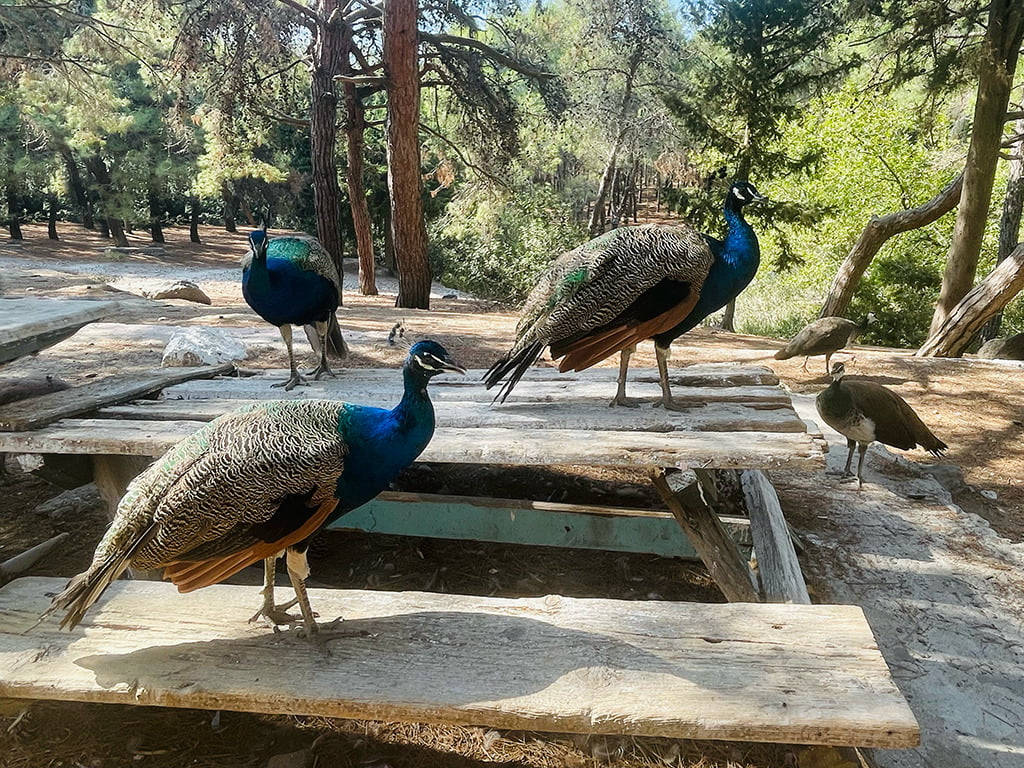
We stop at Kefalos Castle, an ancient fortress dating back to the Byzantine period, situated on a hilltop overlooking the picturesque village of Kefalos. Little remains of the original castle, but the place impresses with its stunning views over the gulf.
Not far away is the Mylotopi, a lovely place built near an old mill with a beautiful view of the surrounding area. You can visit the interior of the mill, the replica of an old living room and the oven still in use today. At the end of the tour you will receive a small non-alcoholic cinnamon drink and a bite of homemade bread. We stayed for lunch and enjoyed the view and tranquillity of the place.
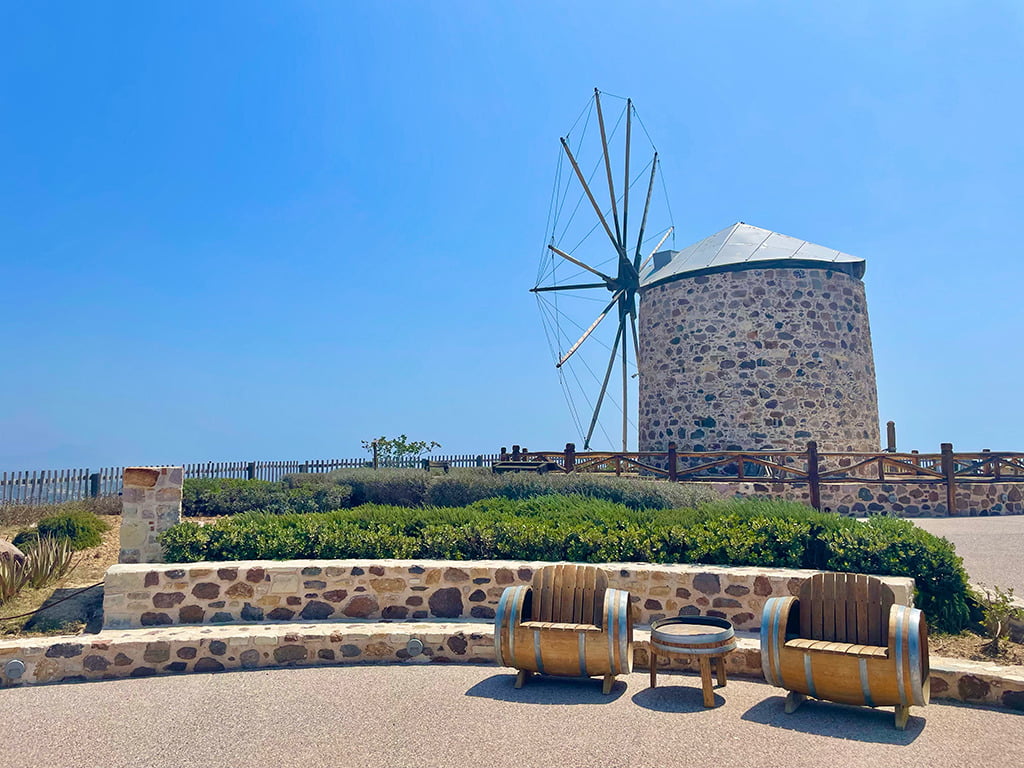
After lunch, we move on to the very special beach of Agios Stefanos, one of my favourite beaches on Kos. Enclosed in a small inlet of soft sand, washed by a crystal-clear sea with often calm waters.
The absolute beauty of the beach is the scenic Islet of Kastri , which stands about 200 metres in the middle of the sea just in front of the shoreline. The islet can be reached by swimming and by climbing up the cliff you can reach the small blue and white church. Legend has it that by ringing the chapel bell three times and making a wish, the chances of it coming true are very high. Behind the chapel there is also a small path that leads to the foot of an imposing rocky boulder that can be climbed; from the top, the view is spectacular and offers a spectacular panorama of the entire cove. The experience is 100% adrenalin-pumping and exciting, I definitely recommend it as a must-do on the island of Kos.
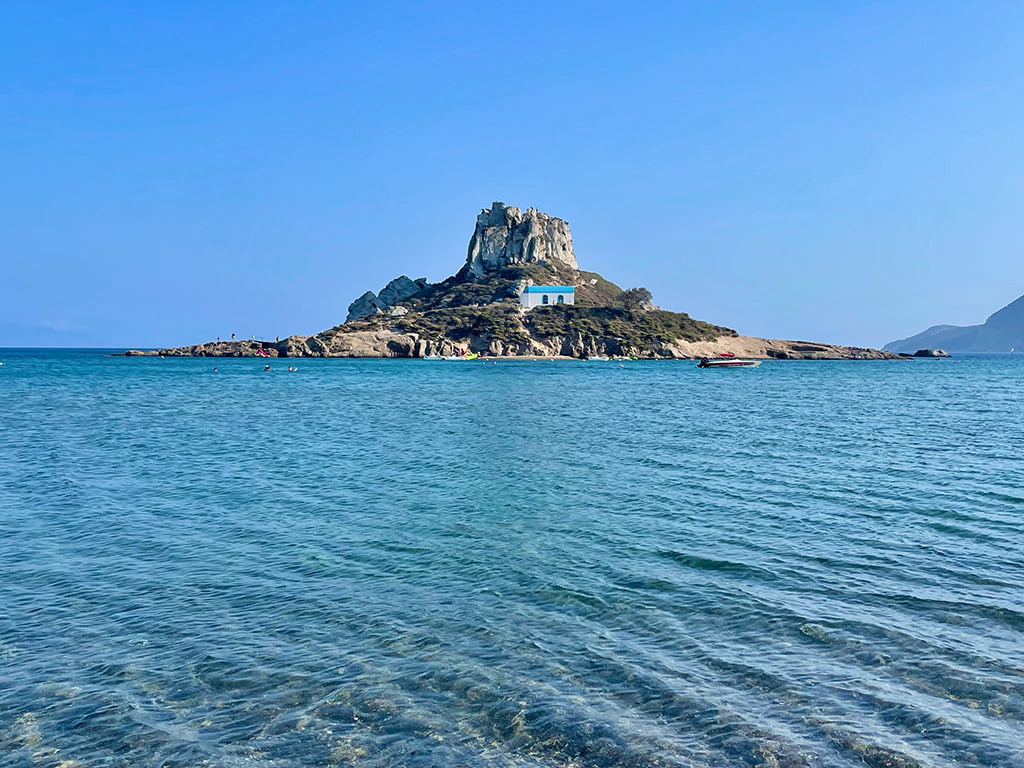
But the special features of the beach are not over, as right on the beach, secluded on a cliff are the ruins of the Early Christian Basilica of Saint Etienne, which at sunset provide a magical and highly positive atmosphere. Behind the beach, there is a small kiosk (in Greek they are called Kantina, practically a caravan used as a shack) where you can find something cool to drink and something quick to eat.
Day 6: Limnionas Beach and Paralia Paradisos
We dedicate the day to the sea. We start at Limnionas Beach, a very quiet beach that is little frequented by mass tourism. The beach consists of two coves divided by a strip of land. The right-hand side is equipped with a few sunbeds and umbrellas, while the left-hand side is completely free and wild. Just in front of the beach one can see the neighbouring island of Kalymnos, famous for its natural sponges. Behind the beach is a tavern with a view of the coast where one can eat fresh fish and traditional Greek dishes.
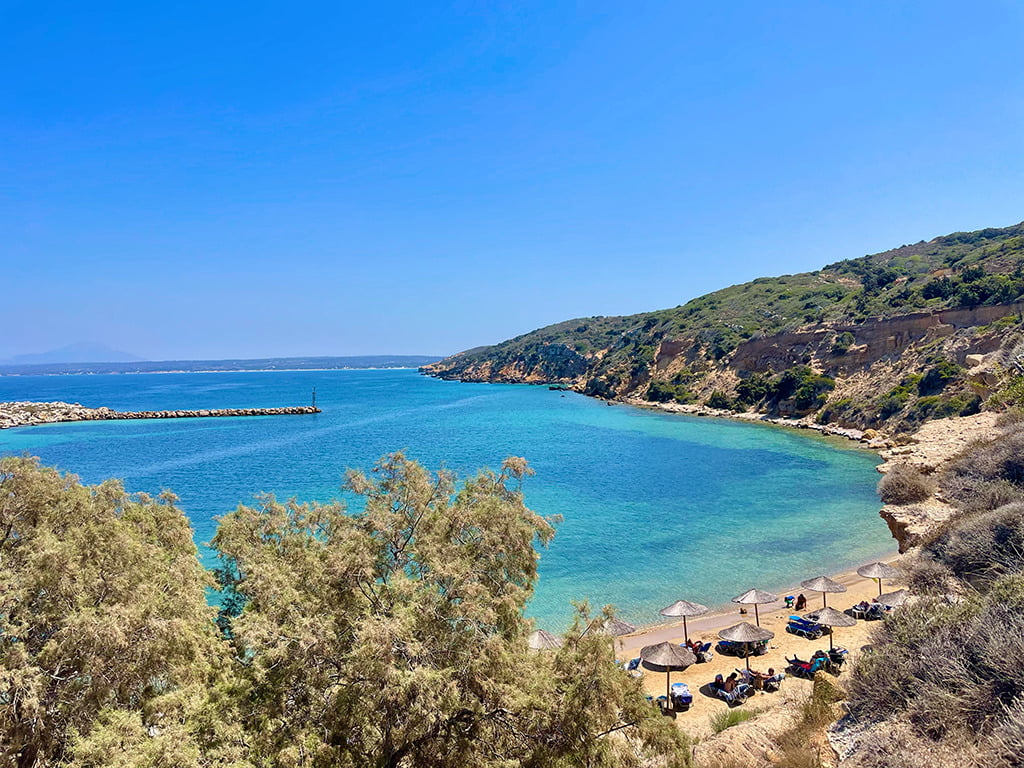
In the afternoon we move on to Paralia Paradisos, also called Cavo Paradisos Beach, – my favourite beach on Kos -, beautiful and wild as hell! It is located on the furthest tip of the island and getting there is really an adventure but absolutely worth it. You cross the entire Kefalos peninsula, plunging into large gorges and almost lunar landscapes, with variations in the colour of the terrain: from the white of limestone, to the yellow of clay, to the red of hematite and goethite, to the black of volcanic earth. The beach is a long, wide expanse of sand with a few boulders on the shoreline that changes from golden to white to pink reflections and a turquoise blue sea with crystal clear waters. Behind it, high white cliffs create a nice contrast to the cisrcostante spectacle. It is equipped with a few sunbeds and umbrellas, while a large part is free. A small kiosk carved out of a caravan offers something to drink and nibble on, although the excessively loud music sometimes spoils the atmosphere, but otherwise just wild and unspoilt nature.

Day 7: Agios Fokas and Therma Beach
The last day is also dedicated to the sea, we stay close to Kos town and enjoy the last bit of relaxation of this wonderful holiday.
Agios Fokas is a stretch of beach with small pebbles, an extremely clean sea and deep blue to blue waters. Opposite, the Turkish coast of Dacia is so close that it seems as if they could touch. The entire coastline is full of bars and taverns where you can have lunch by the sea.

In the afternoon we move on to Therma Beach, a very special beach thanks to its natural thermal waters that flow directly from the sea. The beach is characterised by dark sand and pebbles but is made extraordinary by the hot thermal springs that mix with the sea water, creating a natural thermal pool directly in the sea. The thermal waters, rich in sulphur, potassium, calcium and magnesium, bubble with temperatures ranging from 42 to 50°C. This combination of natural elements creates a true outdoor spa, ideal for relaxing and pampering oneself until sunset.
TipsforTrips: Beware of taking silver objects with you because hot water rich in sulphur tends to oxidise it, creating a very dark patina of silver sulphide. Fortunately, it is possible to reverse the reaction with a little bicarbonate.
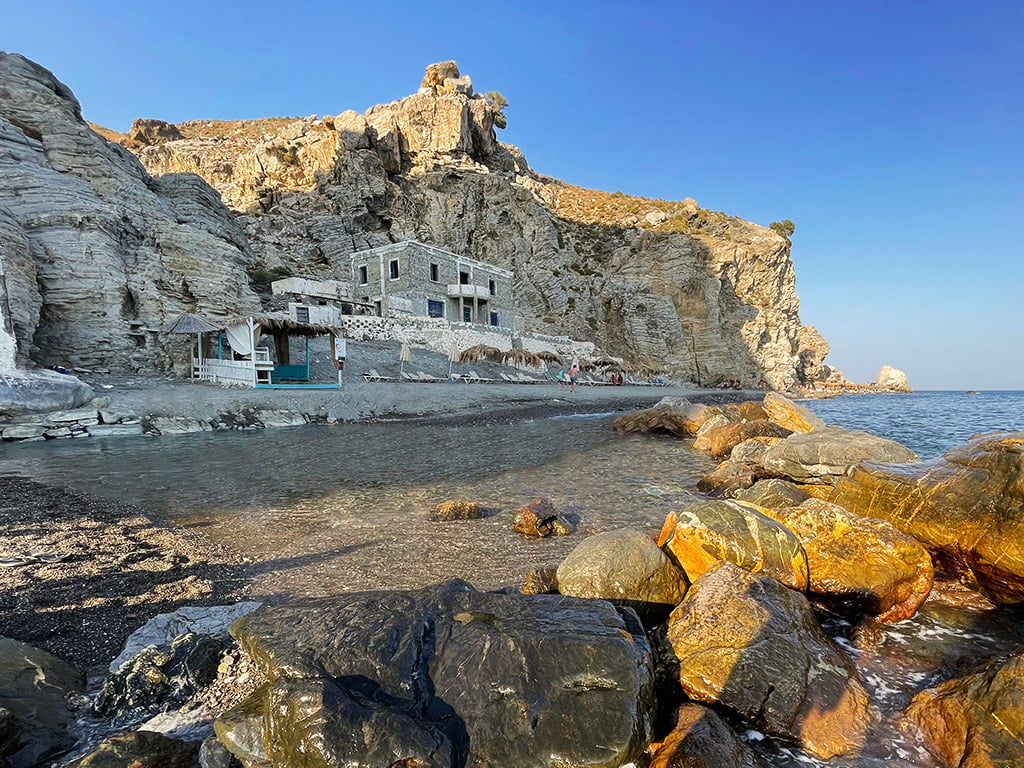
In the evening, we enjoy a last stroll through the alleys of Kos, our suitcases already packed, full of all this beauty. Even in this adventure, Greece does not disappoint us, confirming that even outside Italy you can feel at home!
Last modified: 15 June 2025
